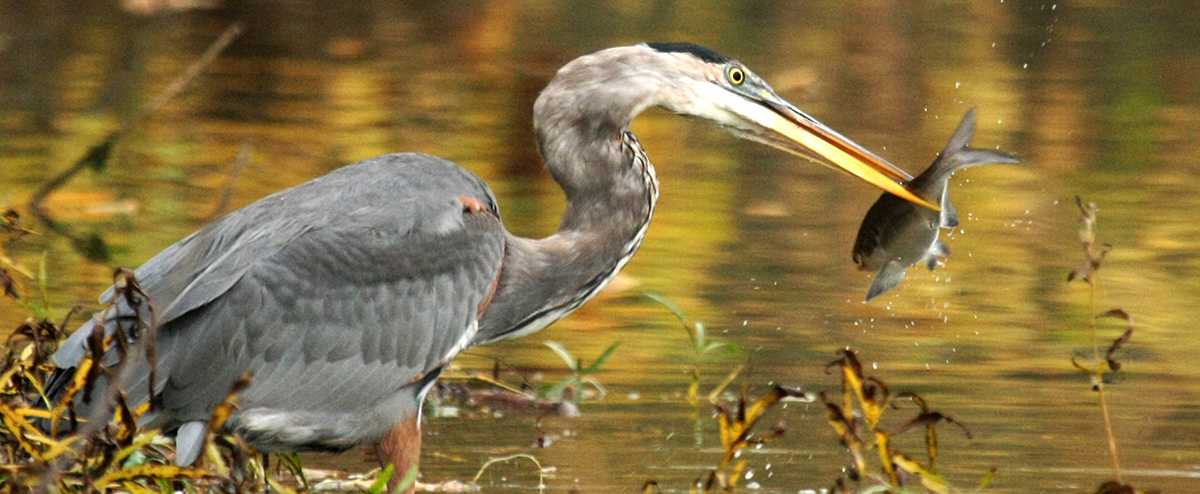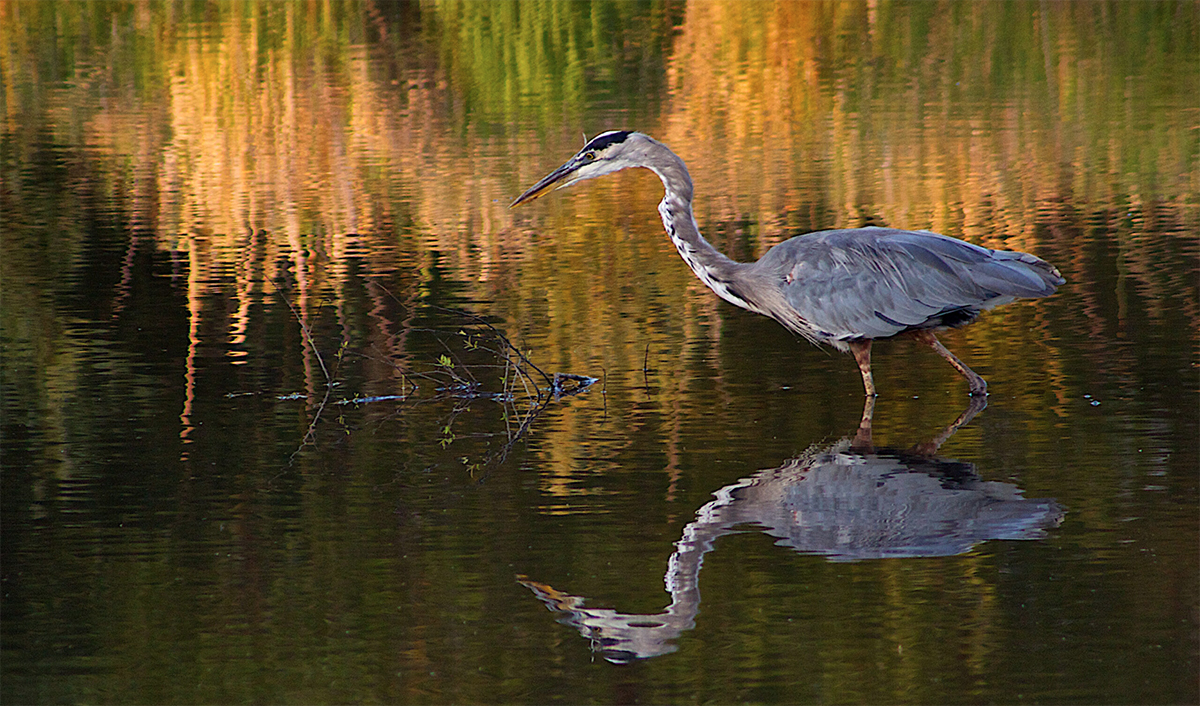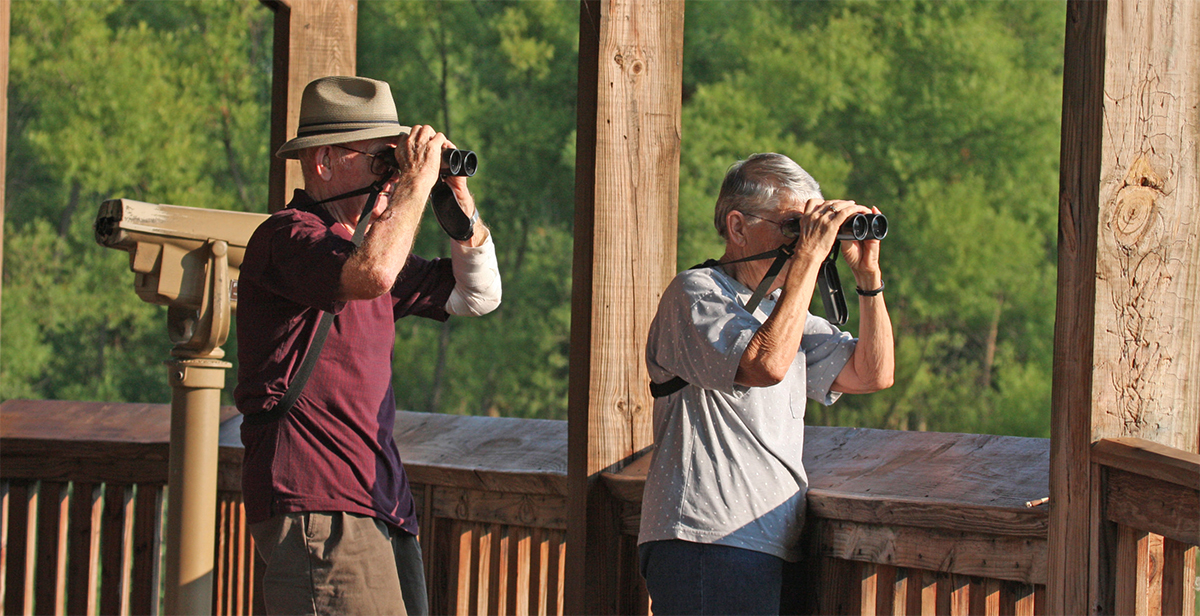SCOTT FELKER
Three Creeks Naturalist

You’ve watched birds in your yard for years and know how to identify cardinals, goldfinches and blue jays. Then a day comes when you decide to dig out those dusty old binoculars and head to your nearest Metro Park to look for other kinds of birds.
It’s early and there’s some mist over a marsh as the sun is rising. A mallard duck and its ducklings swim quietly among the cat-tails. Red-winged blackbirds sing “o-ka-ree, o-ka-ree.” A green frog jumps into the water. A tall, slender bird suddenly stabs its bill into the water and comes up with a small fish. It tilts its head back and the fish is gone.
The bird is a great blue heron and it is one of the most readily seen birds in and around Ohio wetlands, ponds, creeks and rivers. With its blue-gray body, light gray neck and plumed black and white head, great blues are among the most striking birds around. Like any flying bird, its bones are hollow so that despite its height and six-foot wingspan, a heron weighs only five to seven pounds.

As a long-legged wader the heron hunts for fish and frogs in shallow water. The feet feature three toes forward and one back. The slightly webbed toes prevent the bird from sinking into the soft muck of a wetland. Its middle toe has a small “comb” on the talon. Herons often get algae and pond scum on their feathers and preening with this comb helps the birds spread absorbent powder-down (feather dust) through the feathers. Think of it as a great blue heron’s version of baby powder.
Great blue herons rely on their eyes to find food and watch for danger. Because they are set well back on the head, each yellow eye focuses independently. The density of rods and cones (structures that detect changes in light and color, respectively) in a blue heron’s eye are about five times greater than that of humans, resulting in excellent nocturnal vision. Their visual acuity is about three times greater than that of humans. Their keen eyesight and sensitive hearing are enhanced by a long, flexible neck, which allows them to see in any direction, making it difficult to get close to a great blue heron.
Most of the heron’s diet consists of fish and if the opportunity presents itself it will eat frogs, salamanders and snakes. With the beak acting like a spear, the bird stabs and kills its prey and swallows it headfirst. By swallowing the prey headfirst it prevents the fish’s fins from getting caught in the throat. Most of the fish herons eat are small but some can be three or four pounds. It can take a half-hour or longer of repeated stabbings with its beak to kill such a large fish. Then comes the challenge of picking up the fish and flipping it so it can be swallowed. Herons occasionally choke to death by trying to eat too big of a fish.

In July and August great blue herons are found just about anywhere there is shallow water and fish. To see a great blue heron feeding requires patience. Most of its time is spent standing still or slowly walking through the water. Sometimes it flicks its wings or feet in the water to get fish to move so they are more easily seen. And then they strike! And eat!
[This article is from the Metro Parks archive. It is an abstract of an article that first appeared in the spring 2011 edition of Parkscope]

Lovely little article. Thanks!
Always nice learning about the habits of our wonderful birds. Great article, thank you.